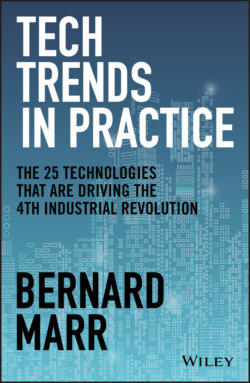Читать книгу Tech Trends in Practice - Бернард Марр, Bernard Marr - Страница 12
Thanks to AI, Machines Can Beat Humans at Games
ОглавлениеMachines battling man is the theme of many a sci-fi movie. In real life, AI research and development has seen intelligent machines beat their human opponents in some significant (but thankfully less harmful) ways.
In 1997, IBM’s Deep Blue chess-playing machine beat world champion Garry Kasparov.4 Many hailed this as the start of machine intelligence catching up to human intelligence, but the reality is perhaps a little less compelling. Deep Blue used brute force computing power to consider every possible chess move, and that’s how it beat Kasparov. (Discover how machines learned to get a lot more creative at game-playing in Chapter 17.)
In 2011, IBM’s Watson AI system beat two human contestants at the game show Jeopardy!.5 And not just any contestants – two of the most successful contestants the show had ever seen, who had won $5 million between them.
In 2018, DeepMind’s AlphaStar AI beat one of the world’s most successful professional players of the real-time strategy game StarCraft II, in an impressive 5–0 victory.6
In 2019, Microsoft revealed its Suphx AI can now beat top players at the complex Chinese tile game Mahjong. After 5,000 games, the AI was able to compete at 10th dan ranking (basically, super-expert level) – a feat that only 180 humans have ever been able to manage.7
Also in 2019, we learned that AI can now solve a Rubik’s Cube in 1.2 seconds – that’s two seconds faster than the current world record holder (and about 20 years faster than the average human).8 The DeepCubeA system was created by researchers at the University of California, Irvine.
